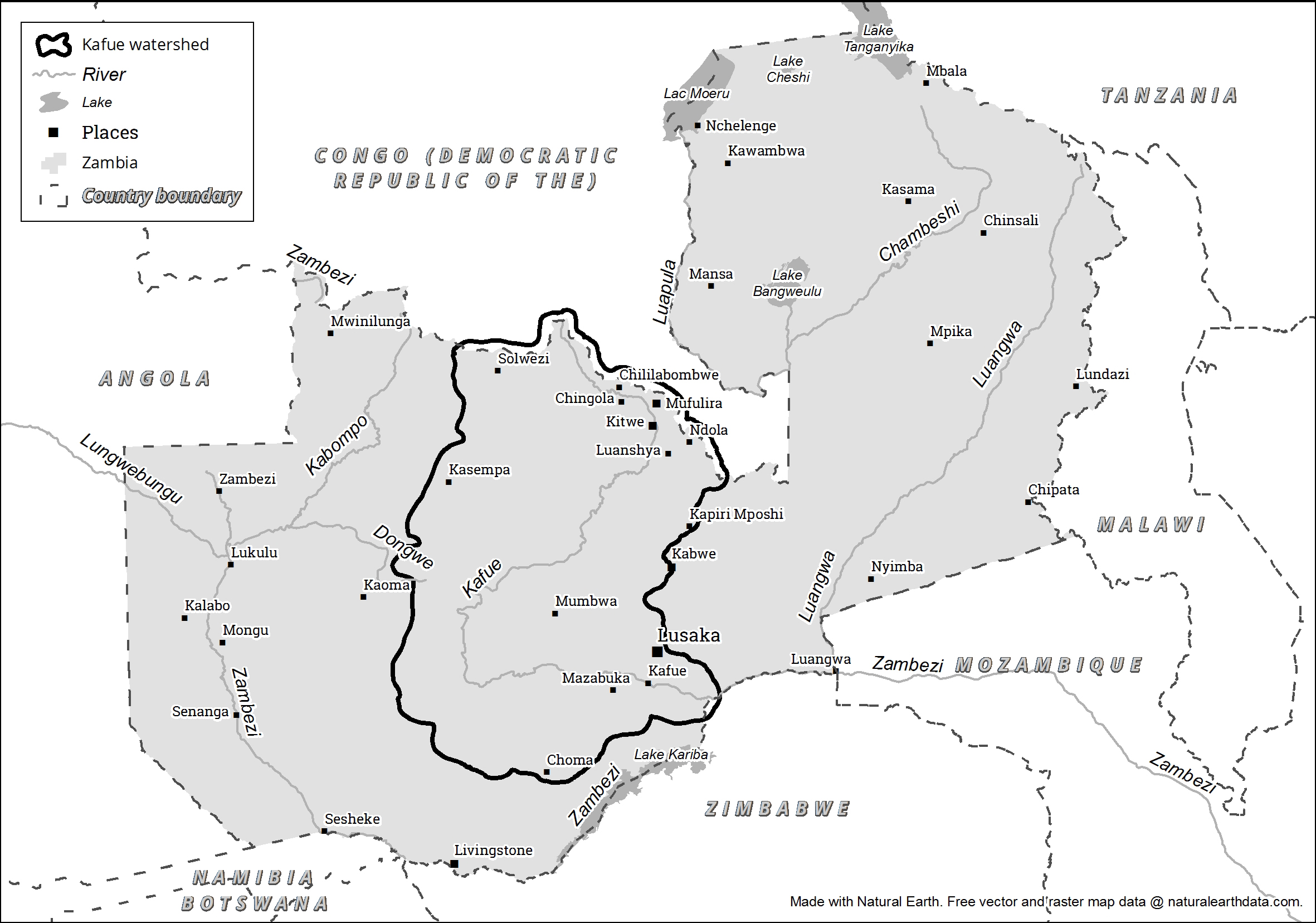IWSN researchers at  Monash South Africa have produced a water security status report aimed at highlighting critical water security issues for the Kafue Flats, located in the Kafue River Basin of Zambia. The Flats are one of the key research areas for the IWSN Africa team, who aim to improve water resource governance in African river basins.
Monash South Africa have produced a water security status report aimed at highlighting critical water security issues for the Kafue Flats, located in the Kafue River Basin of Zambia. The Flats are one of the key research areas for the IWSN Africa team, who aim to improve water resource governance in African river basins.
The Kafue Flats are one of the most important ecological areas in Zambia. It hosts a number of endemic species – of particular significance are the Kafue Lechwe and the wattled crane, whose distribution spans two of the National Parks on the Flats – Blue Lagoon and Lochinvar. In an effort to emphasize its ecological importance, the Kafue Flats was declared as a Ramsar site under the Ramsar Convention on Wetlands in 1991. Economically, the Flats also hosts a large number of industrial and commercial activities all of which depend on water resources from the Kafue River. It is no surprise that the river is often referred to as the “life blood” of the Zambian economy. Against this background, water security issues are bound to take centre stage in this ecological and economic hot spot.
The report comes at a time when Zambia – like several countries in southern Africa – is undertaking several reforms in the water sector aimed at strengthening governance of water resources. Some of the reforms include the establishment of catchment and sub-catchment institutions for devolution of authority at a local level, and replacing the water rights system with a water permit system. In this regard, the Kafue Flats is a pilot site for the establishment of catchment and sub-catchment institutions, and lessons from this process will be extended to other catchments in the country. Therefore, the importance of the Flats goes beyond the economic and ecological, as it becomes a significant point of institutional learning for the rest of the country.
The report highlights several aspects including: opportunities and challenges for reforming the water resource sector; water availability and demand; and implications of planned and proposed projects on the Kafue Flats. One of the challenges of reforming the water sector has been establishing and sustaining the operations of newly established structures. Among the strategies that have been identified for financing its operations has been revising the pricing strategy for water permits. This has raised a lot of alarm among water users such as commercial farmers, who fear that they are the ones bearing the cost of these new structures. One opportunity identified in the report that has not been adequately utilised is partnerships with the private sector through their water stewardship responsibilities. Several efforts are being made in this direction by civil society organisations working on the Flats.
The closing threshold between water availability and demand has resulted in the Kafue River Basin being labelled as a highly stressed basin. Expansion of hydro-power generation and sugar cane production entails increased water abstraction on the Flats. This means that sustaining an ecological reserve for the river will become a highly contentious process among stakeholders. Already stakeholders are grappling with enforcing dam operating rules for the two dams on the Kafue Flats to mimic natural flooding patterns. If not addressed, there is a risk that the Kafue Flats will become a Perennial River rather than a wetland. The report further highlights challenges of monitoring water resources on the Flats due to the limited hydro-meteorological network there. Out of a total of 100 stations in the Kafue River Basin, only 33 are operational and just six of these are on the Flats. This means that adaptive water allocation planning amidst variability of water resources becomes a difficult and often complex affair.
A number of planned projects are earmarked for possible implementation by 2020. The Revised Sixth National Development Plan (2012‒2016) for Zambia identifies agriculture, energy, livestock, fisheries and infrastructure development as the main growth areas, with the majority of these located in the Kafue River Basin. Projects such as the Kafue Gorge Lower and the Batoka Gorge Hydroelectric Power Station will entail increasing water allocation for hydro-generation. The report notes that such expansions could further alter the flooding patterns on the Flats and deepen the threat to biodiversity. In addition, abstraction of water for domestic water supply will more than double to meet the increasing demand from surrounding metropolitan areas such as Lusaka. All of this has the potential to increase the complexity of balancing water resource needs in terms of quantity, quality and timing on the Flats.
